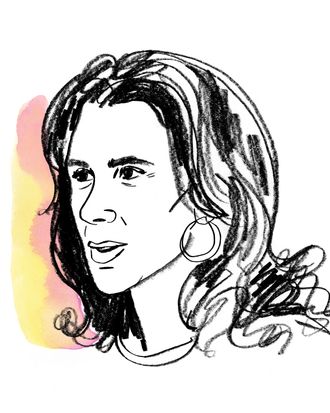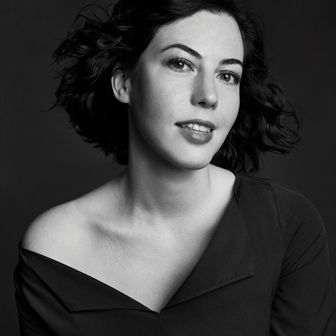
Jodi Kantor has worked at the New York Times since 2003, first as the Arts and Leisure editor before transitioning to political and investigative reporting. She’s extensively covered the Obama presidency, exposed working conditions at Amazon, and followed Syrian refugees in Canada. Most recently, Kantor, with Megan Twohey, exposed the blockbuster Harvey Weinstein sexual harassment scandal, which sparked a movement of women calling out abusive men in power. Kantor lives in Park Slope, Brooklyn, with her husband, New York Times columnist Ron Lieber, and their two children. Here, she shares how she gets it done.
On a typical morning: I’m breathing a sigh of relief these days because my toddler, who’s 2 years old, is finally waking at 6:30. She was a 5 a.m. baby for a long time, which was challenging — especially during periods of intense reporting. Mornings are busy: My husband and I get the baby breakfast and make sure that our tween has her homework and after-school activities figured out — and that her phone is charged. Then we look at our schedules for the day. Ron and I work for the New York Times but it’s rare that we even see each other at the office because we’re both so busy. And I have eggs every single morning — to the point that the 2-year-old looks at me and says, “Mommy want eggs?”
On parenting as journalists: One thing Ron and I have in common is that a lot of our work involves listening to people’s stories. Our sources don’t see it, but sometimes we’re doing that while we’re surrounded by baby toys or while taking a break to go and change a diaper.
On getting into journalism: I really thought I wanted to be a lawyer, but then I had an epiphany when I was in law school and dropped out. I’d always been a journalism junkie, but I’d never had confidence to think that I could actually edit or write the stories. The thing that I take for granted now, having my byline at the New York Times, is that all of this seemed not only remote to me when I was young — but it also seemed like a form of narcissism. The prospect that I could actually be a journalist triggered a, Who do you think you are? reaction in me. It was only in going to law school and being unhappy there that I realized that I really, really had to try it.
On the Weinstein investigation: Megan Twohey and I worked for months and months on this story — I started in late May or early June. We felt an incredible responsibility, and once Megan and I understood the material, we became terrified of failure. We hated the thought that we might not be able to publish and that we would essentially have to go to our graves holding these revelations privately. With the Weinstein project, more than any other, I literally could not stop working. I worked every weekend hour that wasn’t devoted to my kids.
On working with a partner: One of the saving graces of this process has been the partnership with Megan because this was a responsibility that we each needed to share with another person. We barely knew each other when we teamed up on this story. Not only were we in constant communication with each other and not only did we compare notes, check judgment, and plot strategy on those matters great and small, but the weight of this reporting is such that you just need somebody to share it with. A lot of the stories we heard are incredibly disturbing, and you don’t want to carry those alone.
Her advice for young journalists: Get as much reporting experience as you can. Train with the best reporters and editors you can; watch them close-up. I don’t think the name brand of the outlet matters as much as the kind of work you are allowed to do. And also, your sources will teach you. It can be incredibly painful at times, but to become a reporter is to experience the horrible feeling of having said the wrong thing to somebody and losing their trust or of talking too much in an interview and realizing that you didn’t capture as much as you could have for that reason. The most profound lessons about journalism I’ve learned have been taught to me by the people I’ve covered.
How she starts a new story: I’ve been working with the same editor for 11 years, Rebecca Corbett. Our work has become a dialogue between the two of us about what ideas we think are interesting, where we see reporting potential, what we think can have impact and what we think will be surprising for readers. We don’t want to publish stories that people already think they know or that, after they finish this paragraph, they can write the script of the rest of the story themselves. We try to be ambitious — not in the sense of personal ambition, but ambitious in the sense of we are lucky to be in this position, to be able to ask tough questions of people in power. How do we wake up every single day and honor that and do justice to these seats that we have been given?
On her workspace: The seating at the Times was just reorganized to be more space efficient, and we moved twice during the Weinstein investigation. So on top of all of that, I was constantly packing and unpacking boxes. At one point, I said to myself, If Harvey Weinstein tried to bug my desk, would he even be able to figure out where I sit?
On hobbies: When you work on a story like the Weinstein investigation, every other non-critical part of your life disappears. For months and months and months, my life basically consisted of my work and my kids, my work and my kids. So much else just evaporated, including exercise, cooking, seeing friends, and, most importantly, being with my husband. I’m in the process now of trying to restore all those areas of life that temporarily vanished.
On finding a balance: Doing this work has been the honor of my life. But part of the privilege and responsibility of working at the Times is that the work always feels important. You ask yourself, Is my personal pleasure or relaxation more important than the work I can get done for the paper right now? Sometimes you have to force yourself to say yes to that question. It’s a tough daily decision, and it’s never entirely clear what the right answer is.
On her newly announced book: My partner Megan and I are incredibly grateful to be working in the newspaper form, but one challenge in newspaper writing is trying to do justice to everything you are seeing and feeling and experiencing as a reporter. As the Weinstein investigation grew and grew — both unto itself and in terms of the impact it had — we said to ourselves there’s a story here we can only tell in book form.





